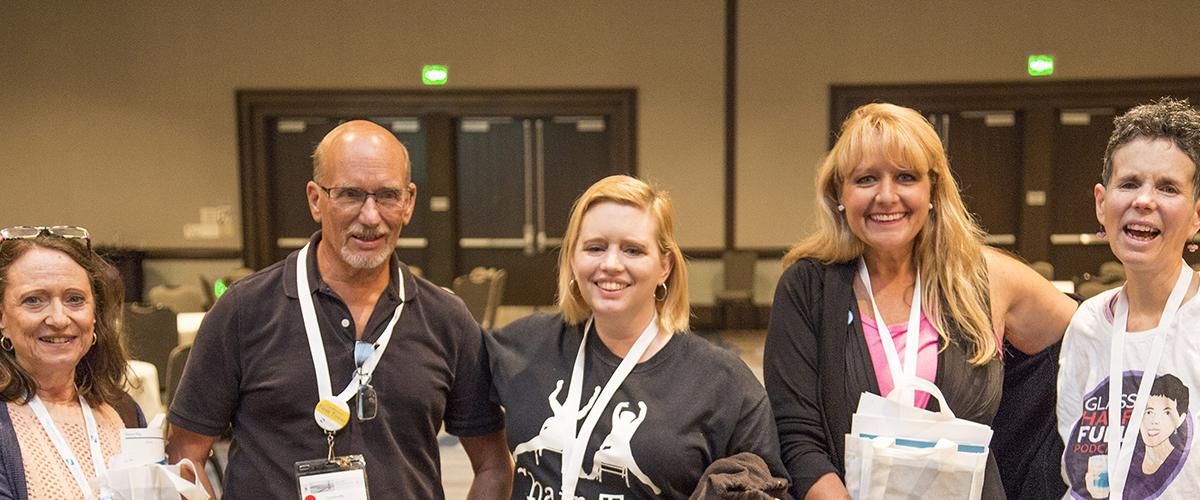Modifying Gene Editing Technology for DM
Gene Editing for DM
Gene editing has garnered considerable publicity as the newest technology with potential for developing therapies for rare diseases. MDF previously published a primer, titled "Using Gene Editing to Correct DM," on the CRISPR/Cas9 technology that has been heavily promoted in the media.
Gene editing technology uses molecular mechanisms that were first developed in bacteria as a shield against invasion from viruses. This approach is rapidly moving into clinical trials for a select group of diseases—those where cells can be isolated from the body, edited, and then returned to patients as a viable treatment for the disease. These diseases are predominantly disorders of the blood and cancers, and several clinical trials are recruiting patients in China (HIV-infected subjects with hematological malignances; CD19+ refractory leukemia/lymphoma; esophageal cancer; metastatic non-small cell lung cancer; EBV-associated malignancies). At least one trial has been approved in the U.S. by the Food and Drug Administration (FDA) and is expected to start soon (this is also for a set of cancers).
For myotonic dystrophy (DM), multiple organ systems are affected and we cannot take the simple path of editing and returning cells to the body—treatment must address simply too much body tissue mass, including the brain, the heart, skeletal muscles, the gastrointestinal system, and other organs that are affected. Thus, for CRISPR/Cas9 to “work” in DM, the gene editing reagents will have to be efficiently delivered to virtually every cell in patients and effectively execute the deletion of CTG and CCTG repeat expansions from the DNA. The delivery of gene editing reagents into patients is an incredibly difficult undertaking and is likely years away from clinical trials in any disease.
Could a Modified CRISPR Technology be Effective in DM?
Investigators at the University of California San Diego, the University of Florida, and the National University of Singapore have recently reported early research that potentially ‘repurposes’ gene editing technology for a set of RNA disorders—myotonic dystrophy type 1 (DM1), myotonic dystrophy type 2 (DM2), a subset of Lou Gehrig’s disease (ALS) patients and Huntington’s disease. They have modified the Cas9 enzyme so it is targeted to toxic RNA, instead of the expanded DNA repeats in these diseases.
The researchers have optimized Cas9 so that it can specifically target and degrade expanded repeat RNA for DMPK and CNBP genes. In many ways, this is similar to the approach that Ionis Pharma is using to target CUG repeats RNA in DM1.
Their development of an RNA-targeted Cas9 results in the degradation of toxic RNA, an increase in the MBNL protein, and reduction or elimination of the gene splicing defect that characterizes DM. The strategy uses gene therapy vectors to delivery the modified Cas9 enzyme. If this approach were to be effective, it’s likely that patients would only need a single intravenous injection to treat skeletal muscles, the heart, and the gastrointestinal system; because gene therapy does not cross the blood brain barrier, a second injection may be needed, into the fluid around the spinal cord, to treat the brain. To work toward clinical development, the researchers have formed a biotechnology company to raise funding and move the candidate therapy forward.
We Still Have a Considerable Way to Go Before this Novel Strategy is in the Clinic
While this approach shows promise, we should be cautioned that studies thus far have only tried the new experimental therapy in patient cells in tissue culture. Therapy development has to pass through preclinical testing in appropriate mouse models, preclinical safety testing and approval by the FDA before the first clinical trial can be launched. Importantly, this effort represents yet another shot on goal to develop a novel therapeutic for DM1 and DM2. MDF monitors all drug development efforts and will keep the community informed as to their progress.


